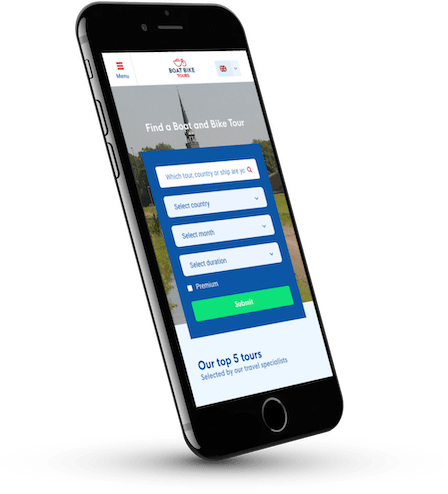Besides being the biggest lake in the Netherlands, the IJsselmeer (IJssel Lake) boasts some other remarkable facts thanks to its dramatic transformations through time: from when it was the stormy Zuiderzee to its modern identity as a freshwater lake.
Sail on the IJsselmmer
Here are five fascinating things about the IJsselmeer, truly one of the Netherlands’ most incredible combinations of nature and engineering:
1. The IJsselmeer was a lake, then the sea, then a lake again
In ancient Roman times, a body of water quite separate from the sea, known as Lacus Flevo, was first noted down in 44 AD by Roman geographer Pomponius Mela.
Then, after centuries of storms and floods washing away dunes and banks, the St. Lucia’s flood of 1287 saw the North Sea finally inundate the freshwater wetland. Thereafter the area became a marine bay known as the Zuiderzee. The Zuiderzee brought new sea trade routes to many villages, including Amsterdam, but also stormy weather and often disastrous tides that wreaked havoc on the land and villages.

More than 600 perilous years passed until, after decades of planning and engineering, construction of the Afsluitdijk (Enclosure Dam) began in 1927. Completed in 1932 and 32km long, the dam once again separated the sea from a freshwater lake – this time through a remarkable feat of modern engineering. The new lake was named IJsselmeer, after the river that flows into it.
2. The idea to dam the IJsselmeer is more than 350 years old
The Zuiderzee could be so fierce and volatile, with such frequent flooding and loss of ships, that many wanted to dam the bay, sealing it off from the sea again. One of the first documented plans dates back to 1667.
But it wasn’t until technology caught up in the 19th century that the strategy was given serious consideration. The idea’s biggest proponent was engineer and politician Cornelis Lely, whose 1891 plan formed the basis for the Zuiderzee Works.
The Zuiderzee Works took over 50 years to complete! Stretching from 1920 to 1975, they not only included the construction of the Afsluitdijk, but also the creation of vast areas of drained lake bed, known as polders, that became a whole new region of the Netherlands!

Statue of Cornelis Lely
3. The new IJsselmeer literally changed everything
Avoiding floods and storm damage wasn’t the only outcome of the creation of the IJsselmeer. Replacing a wild sea bay with a gentle lapping lake created all kinds of opportunities, challenges and knock-on effects.
Firstly, Flevoland, an entire new province of the Netherlands, complete with farms, railways and cities, emerged from what used to be the sea floor! Food security was also strengthened as farmland and crops could expand without the threat of floods. And the IJsselmeer itself became a massive freshwater reservoir, ensuring a fresh water supply for cities and agriculture.
Dozens of coastal villages, like Volendam and Monnickendam, that previously earnt their living as seafarers and fishermen, suddenly found themselves living alongside a calm lake. There were even two islands, Urk and Schokland, that joined the mainland!
Ijselmeer’s rich seafaring past is still tangible in its countless towns, villages and landmarks – and at the fascinating Zuiderzee Museum at Enkhuizen.

Historic harbor of Spakenburg
4. IJselmeer’s Afsluitdijk is getting an upgrade
After 87 years separating the IJsselmeer from the sea, the hardworking Afsluitdijk is getting an upgrade. The renovation is to prepare the dam for a future of rising sea levels and more unpredictable weather. Started in late 2018, the new works will reinforce the dike and raise its height by roughly 2 meters.
Just like the dam’s original construction, this upgrade is yet another feat of modern engineering – this time with sustainability at its core. It will feature sustainably-designed concrete blocks, solar powered pumping stations and fish-friendly locks and sluices. Expected completion is in 2022.
5. There’s something fishy going on…
As part of the renovation of Afsluitdijk, much attention has been given to restoring IJsselmeer’s natural balance. In particular, reintroducing migratory fish species by providing them with an access channel between the lake and the sea.
This revolutionary fish migration river, as it’s known, will allow species such as eels and salmon to swim freely between the IJsselmeer and the sea. More than a kilometer long, the winding artificial river gives fish a sheltered environment for breeding, growing, and adjusting between salt- and freshwater.


Project Afsluitdijk, to be finalized in 2022
Discover the beautiful IJsselmeer for yourself!
With our cycling (and sailing) cruises you can explore the IJsselmeer’s gorgeous green coastline, charming old fishing villages, Zuiderzee Museum and the Afsluitdijk.
- Sail & Bike IJsselmeer
- Sail & Bike IJsselmeer Guided
- Sail & Bike Wadden Sea
- 8-day Sail & Bike Tulip Tour
- Northern Tour of Holland
Pictures 1,3,4,5 see: https://beeldbank.rws.nl/
Join a Sail & Bike trip from Boat Bike Tours
Does this sound like an adventure for you? Boat Bike Tours has several cycling and sailing trips. If you would like to see national parks, picturesque former fishing villages as well as the Venice of the Netherlands, Giethoorn, then the Sail & Bike Ijsselmeer + National Parks trip is ideal. Prefer island hopping? On the Sail & Bike Wadden Sea trip you cross the Wadden Sea to both Texel and Terschelling.
Ask us!
If you have any questions or would like to know more about our trips, please email or call us at +31 (0) 20 72 35 400. You can request a quote here: Who knows? Maybe we’ll see you on one of our bike-boating holidays!
Plan your trip


